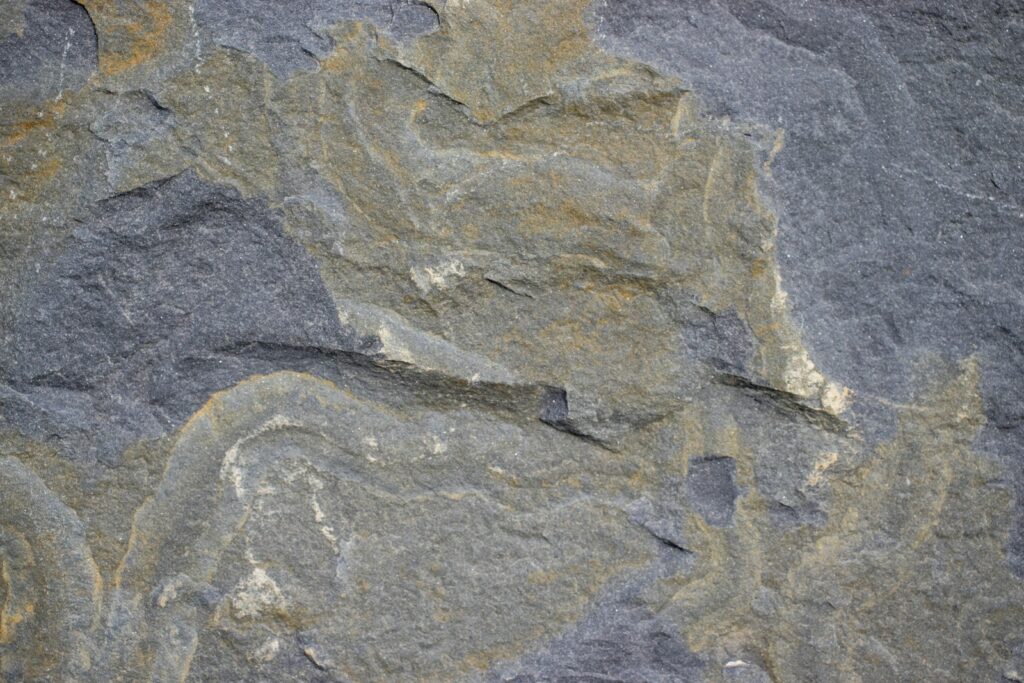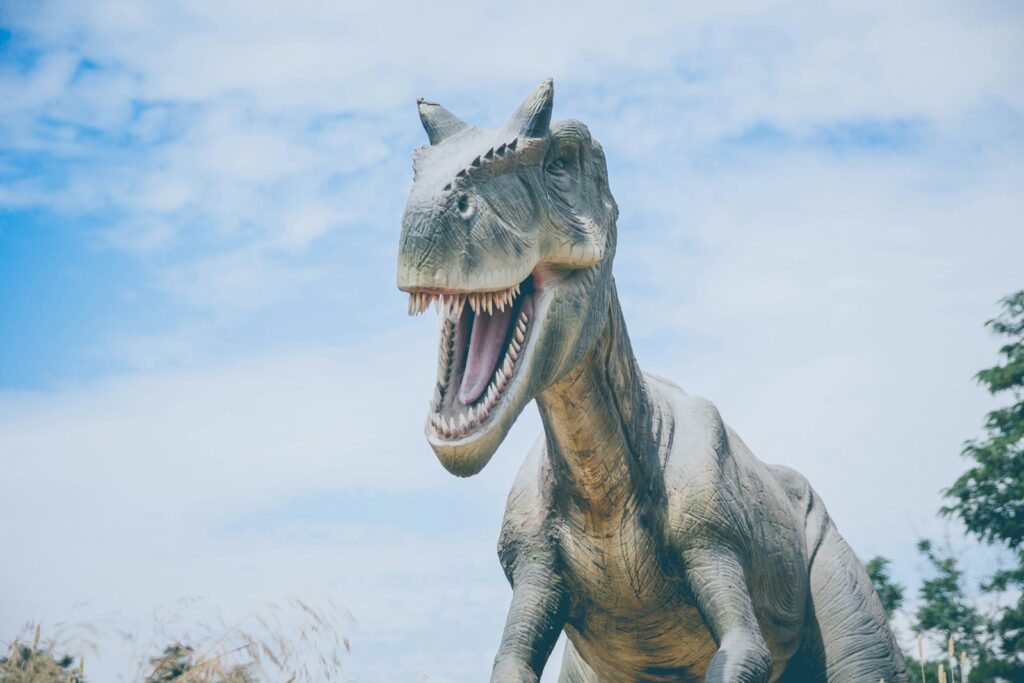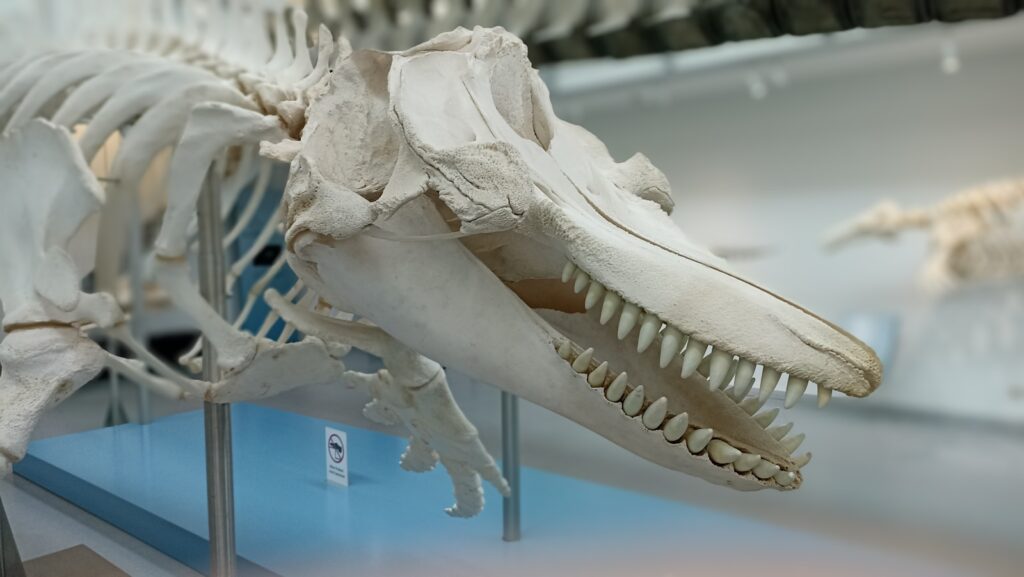The question of whether dinosaurs could have evolved human-like intelligence if not for their extinction 66 million years ago remains one of paleontology’s most fascinating thought experiments. For 165 million years, dinosaurs dominated Earth’s ecosystems, diversifying into countless species with varying capabilities. While we traditionally picture dinosaurs as primitive reptiles, recent discoveries have dramatically shifted our understanding of their biology, behavior, and cognitive potential. This exploration takes us through the evolutionary pathways that might have led to intelligent dinosaurs, examining the evidence from both the fossil record and comparative biology to assess whether a dinosaur civilization could have been an alternate reality for our planet.
The Evolutionary Foundation for Intelligence

Intelligence doesn’t emerge randomly but follows specific evolutionary pressures that select for increased cognitive capabilities. In humans, factors like social complexity, tool use, and ecological challenges drove brain development over millions of years. For dinosaurs, similar evolutionary pressures existed in certain lineages, particularly among the theropods. These bipedal predators faced complex hunting challenges that required problem-solving abilities, spatial awareness, and potentially coordination between individuals. The evolutionary foundation for intelligence was certainly present in the dinosaur world, with selection pressures that could have favored increased cognitive capacity over time. Some paleontologists argue that the cognitive demands of predation, along with the advantages of social behavior, created conditions where intelligence would have been increasingly beneficial for survival and reproduction.
Brain Size and Encephalization in Dinosaurs

Brain size relative to body size, known as encephalization quotient (EQ), offers clues about potential intelligence in extinct species. While most dinosaurs had relatively small brains for their body size, certain theropods showed encouraging trends. Troodontids, a family of small, predatory dinosaurs, possessed the highest EQ among dinosaurs, with brain-to-body ratios approaching those of primitive birds and some modern reptiles. Stenonychosaurus, once known as “Troodon,” had an estimated EQ of 5.8 compared to 2.4 for a typical reptile. This suggests cognitive abilities potentially exceeding those of modern reptiles, though still far from primate levels. Fossil endocasts (natural casts of brain cavities) reveal enlarged cerebral hemispheres in some theropods, indicating greater processing capability than their contemporaries. These anatomical features hint at cognitive potential that might have continued developing had extinction not intervened.
The Dinosaur-Bird Connection

The evolutionary relationship between dinosaurs and birds provides compelling evidence for dinosaur intelligence potential. Modern birds, the direct descendants of theropod dinosaurs, display remarkable cognitive abilities despite their small size. Corvids (crows and ravens) and parrots demonstrate tool use, problem-solving, self-awareness, and even rudimentary language capabilities that rival those of primates. These avian cognitive traits emerged from the dinosaur lineage, suggesting that the neurological framework for advanced intelligence already existed in certain dinosaur groups. The miniaturization that occurred in the theropod-to-bird transition also led to increased neuron density, enhancing cognitive efficiency. Had certain dinosaur lineages undergone similar selection for neural efficiency without the pressure to fly, they might have developed even more impressive cognitive capabilities while maintaining larger brain volumes.
Social Complexity as a Driver of Intelligence

Social complexity serves as a major driver of cognitive evolution across animal groups, with social intelligence often preceding technical intelligence. Fossil evidence increasingly suggests that many dinosaur species were social creatures. Massive bonebeds of ceratopsians and hadrosaurs indicate group living, while trackways show coordinated movement patterns in some species. Particularly compelling are the pack-hunting behaviors inferred from Deinonychus and Utahraptor fossils, where multiple individuals coordinated attacks on larger prey. The discovery of nest sites with communal breeding arrangements further supports sophisticated social structures. These social behaviors would have created evolutionary pressure for increased communication, recognition of individuals, memory for social hierarchies, and prediction of others’ behavior – all cognitive skills that drive brain development. The complex social dynamics observed in theorized dinosaur groups mirror the conditions that spurred intelligence in primates and cetaceans.
The Troodon Thought Experiment

Paleontologist Dale Russell proposed a famous thought experiment in the 1980s involving Troodon (now Stenonychosaurus), a small, agile dinosaur with stereoscopic vision, grasping hands, and an enlarged brain. Russell’s “dinosauroid” speculated how this creature might have evolved over 65 million years into a sapient being with human-like characteristics. While critiqued for its anthropocentric approach, the underlying concept remains valid: given sufficient time and appropriate selective pressures, Troodon’s lineage might have evolved greater intelligence. Modern approaches to this thought experiment emphasize that intelligent dinosaurs would likely retain distinctly dinosaurian features rather than converging on human morphology. A dinosaur civilization might have emerged from these clever theropods developing tool use, complex communication, and cultural transmission, potentially taking a completely different evolutionary and technological path than primates did.
Manual Dexterity and Tool Use Potential

Manual dexterity represents a crucial prerequisite for advanced tool creation, which catalyzes technological development and further cognitive evolution. Several theropod dinosaurs possessed three-fingered hands capable of grasping objects with surprising precision. Dromaeosaurids like Velociraptor had semi-opposable digits that could potentially manipulate objects, while avimimids and oviraptorosaurs showed even greater potential for fine manipulation. Recent research suggests that some smaller theropods could partially pronate their wrists, enhancing their ability to handle objects. Fossil evidence occasionally shows dinosaurs with gastroliths (stomach stones) deliberately selected and swallowed to aid digestion – a primitive form of tool use already present in the dinosaur lineage. While dinosaur hands never reached the versatility of primate hands, they provided sufficient manipulation capabilities to potentially launch a trajectory of increasingly sophisticated tool use that could have driven further cognitive development.
Metabolism, Brain Function, and Intelligence

Sustained high intelligence requires substantial energy in the form of a high-metabolism, endothermic (warm-blooded) physiology. The old view of dinosaurs as sluggish, cold-blooded reptiles has been thoroughly debunked by modern research. Evidence from bone microstructure, growth rates, predator-prey ratios, and posture all point to dinosaurs possessing metabolisms more similar to modern birds and mammals than to reptiles. Theropod dinosaurs, in particular, show clear signs of endothermy, with some possessing respiratory systems with air sacs similar to birds that would have supported high metabolic demands. The discovery of feathers and proto-feathers in numerous dinosaur species further supports their warm-blooded nature, as these structures primarily function for insulation. This energetic capacity would have provided the metabolic foundation necessary to support increasingly complex brains. The connection between endothermy and intelligence is well-established in modern animals, with endotherms generally demonstrating greater behavioral flexibility and learning capacity than ectotherms.
Time as the Critical Factor

Evolution requires enormous periods to produce significant changes in cognitive capacity, and time may have been the most critical factor in the dinosaur intelligence question. Dinosaurs dominated terrestrial ecosystems for approximately 165 million years, nearly three times longer than the entire evolutionary history of primates. This vast timespan allowed for extensive diversification and specialization across dinosaur lineages. Had the K-Pg extinction event not occurred, dinosaurs would have had an additional 66 million years—the entire Cenozoic Era during which primates evolved larger brains—to potentially develop greater intelligence. The most promising candidates for cognitive evolution, like the troodontids and dromaeosaurids, had already established the neurological foundation for advanced cognition before the extinction. Given tens of millions more years of evolution under the right selective pressures, these lineages might have produced species with cognitive abilities rivaling or exceeding those of modern great apes.
Ecological Pressures and Intelligence Evolution

Specific ecological niches and challenges often drive cognitive evolution, as seen in the distinct intelligences that evolved in dolphins, corvids, and primates. The Late Cretaceous period featured complex ecosystems with intense competition that could have selected for increased intelligence in certain dinosaur lineages. Smaller theropods faced particular challenges navigating environments dominated by larger predators, potentially driving selection for problem-solving and social coordination as survival strategies. Climate fluctuations during the Cretaceous created additional evolutionary pressure for behavioral adaptability and learning. Some paleontologists have proposed that declining oxygen levels in the late Cretaceous might have favored smaller-bodied theropods with relatively larger brains, potentially accelerating cognitive evolution. The mosaic of environments across Pangaea’s fragmentation would have created isolated populations facing unique challenges, potentially driving parallel evolution of intelligence in multiple dinosaur lineages simultaneously.
Convergent Evolution and Intelligence

Convergent evolution—the independent development of similar traits in unrelated groups—suggests intelligence might emerge predictably under certain conditions. On Earth, complex intelligence has evolved independently in corvids, cetaceans, primates, cephalopods, and even some social insects, indicating multiple evolutionary pathways to cognitive sophistication. Dinosaurs exhibited numerous examples of convergent evolution with mammals, including predator-prey relationships, herbivore digestive adaptations, and even possible burrowing behaviors. This pattern suggests dinosaurs were subject to similar evolutionary pressures as mammals and might have followed parallel cognitive trajectories, given sufficient time. Neural architecture supporting advanced cognition has evolved independently multiple times, suggesting dinosaurs could have developed their unique form of intelligence distinct from but comparable to that of mammals. The fossil record shows dinosaurs already converging on several mammalian adaptations, making it reasonable to hypothesize continued convergence in neural capabilities had they survived.
The Asteroid Impact: A Cognitive Reset Button

The Chicxulub asteroid impact that ended the Mesozoic Era effectively reset Earth’s cognitive evolution, eliminating the most neurologically advanced dinosaur lineages. This catastrophic event disproportionately affected larger animals, with only certain small-bodied dinosaurs—the ancestors of modern birds—surviving. Interestingly, the dinosaur groups showing the most promising cognitive potential, such as the troodontids and dromaeosaurids, were among those eliminated. The post-impact world favored small, generalist mammals that could survive on limited resources in devastated ecosystems. This extinction pattern created an evolutionary vacuum that mammalian lineages eventually filled, leading ultimately to primate intelligence. Had the asteroid missed Earth, an alternative history might have unfolded where mammals remained small, nocturnal creatures while dinosaur lineages continued their cognitive evolution uninterrupted. The extinction event thus represents a profound “what if” moment in the evolution of intelligence on our planet.
Limitations to Dinosaur Intelligence Evolution

Despite the promising indicators, several factors might have constrained dinosaur cognitive evolution. Cranial capacity in dinosaurs was limited by biomechanical constraints related to their reptilian skull architecture, potentially restricting absolute brain size even in the most intelligent lineages. The energetic trade-offs between maintaining a large body size and powering energy-intensive brains might have created evolutionary compromises that limited cognitive development. Dinosaurs also lacked the extended parental care and childhood learning periods characteristic of primates, potentially restricting the cultural transmission of knowledge. Their sensory world, primarily dominated by vision and olfaction rather than the fine tactile sensitivity of primates, might have directed cognitive evolution along different paths than those leading to human-style intelligence. Some paleontologists also suggest that the stable ecological dominance of dinosaurs reduced the selective pressures that might drive cognitive arms races, potentially leading to evolutionary stasis rather than continued cognitive advancement.
The Counterfactual Dinosaur Civilization

If intelligent dinosaurs had evolved, their civilization would likely differ dramatically from human society due to their distinct biology and evolutionary history. An intelligent dinosaur species might have developed technologies adapted to their unique anatomy, perhaps emphasizing different sensory modalities or mechanical principles. Their architecture and infrastructure would accommodate different body plans, potentially featuring vertical spaces optimized for creatures comfortable with height and three-dimensional movement. Dinosaur agriculture might have emerged from different dietary needs and manipulative capabilities, perhaps developing unique domesticated species. Their art, culture, and conceptual frameworks would reflect a reptilian rather than mammalian neurological foundation, potentially featuring alien aesthetics and values. Communication systems might emphasize visual displays supplemented by vocalizations, evolving into writing systems and information technology fundamentally different from human examples. A dinosaur civilization would represent a fascinating alternative evolutionary path for intelligence on Earth—neither better nor worse than human civilization, but profoundly different in its manifestations.
Conclusion

While dinosaurs never developed human-like intelligence during their 165-million-year reign, the evidence suggests this outcome was neither impossible nor implausible, given enough time and the right evolutionary pressures. Certain dinosaur lineages, particularly among the small, agile theropods, possessed the neurological foundation, physical capabilities, and social complexity that could have supported continued cognitive evolution. Their warm-blooded physiology would have provided the metabolic support necessary for larger brains, while their manipulative appendages offered potential for basic tool use. The emergence of intelligence in their avian descendants further demonstrates that the dinosaur lineage contained the genetic toolkit for advanced cognition. Instead of asking if dinosaurs could have evolved human-like intelligence, perhaps the more appropriate framing is whether Earth might have eventually witnessed the rise of a completely different form of intelligent life had the asteroid impact not redirected evolution’s course. The question remains one of paleontology’s most intriguing counterfactual scenarios, reminding us that intelligence, even our own, represents just one possible outcome in life’s vast evolutionary experiment.




